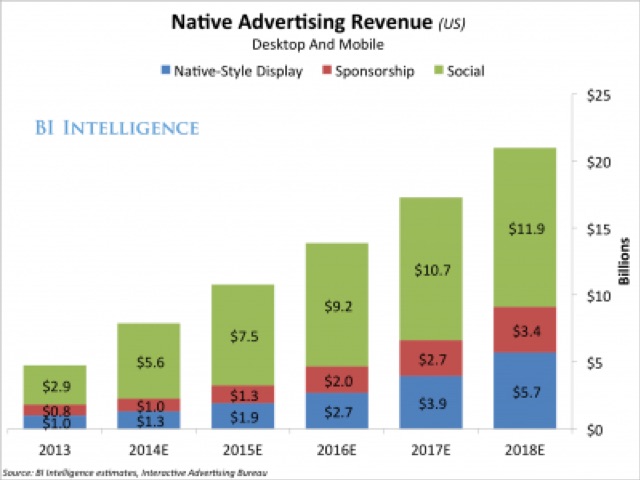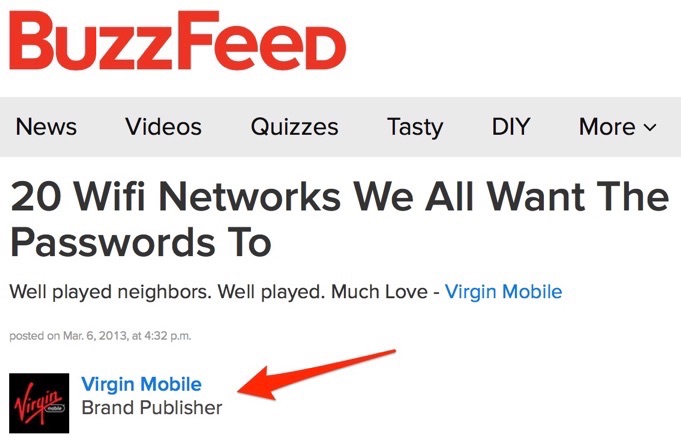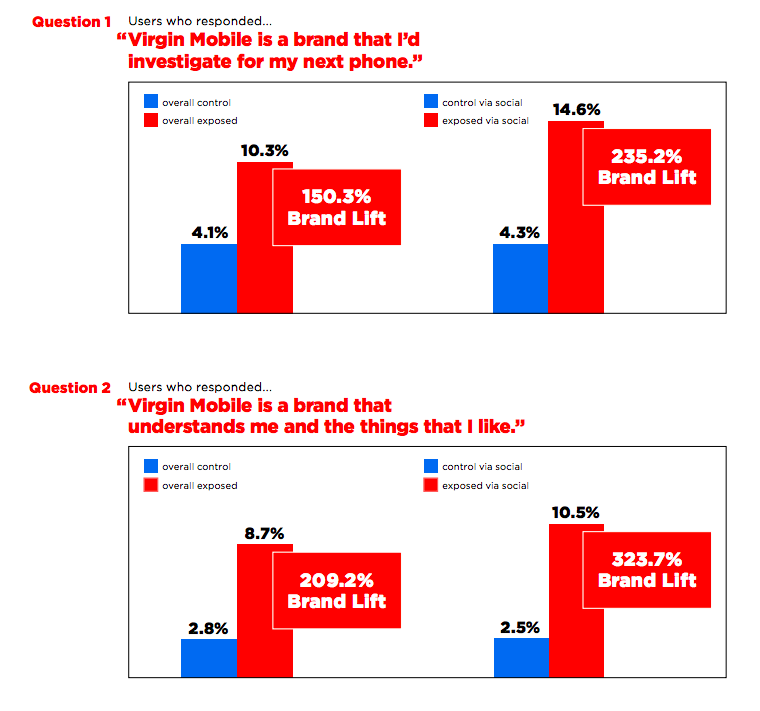In 2011, Google’s Zero Moment of Truth report struck fear into the hearts of marketers and companies alike with its finding that the average consumer reviews 10.4 pieces of content before converting.
What made this finding so scary? It underlined the importance of content to modern marketing strategies, and many companies feared they weren’t producing nearly enough content to drive conversions.
To remain competitive, marketers and small businesses jumped in feet first.
Their version of “shoot first; ask questions later” resulted in a lot of content produced on websites that wasn’t actually doing much converting.
The Benefits of Branded Content
Soon, astute businesses realized that publishing high-quality content instead of high volumes of content was what really counted. These businesses began reaching out to pay to get their content published beyond their own websites, on the sites of complementary online publications — often those with more traffic.
This type of content, called “branded content” (or “sponsored content”), is a way for brands to expose their content to a much larger audience than their own websites, while possibly building a collection of trustworthy backlinks to their site and getting their brand in front of more eyes.
An example is this branded article that New York Times’ T Brand Studio produced for Netflix. While this piece doesn’t mention the benefits of Netflix services or products in a traditional advertising sense, it does provide original and thought-provoking insight into the topic of female inmates — a topic that also serves as the main focus of a Netflix original series. Instead of spending their dollars on a banner ad telling consumers to watch Orange is the New Black, Netflix put their resources towards getting an intriguing piece of content in front of the eyes of over 1 million New York Times readers; content that may inspire many of those readers to watch the related Netflix series.
Marketers and advertisers are embracing branded content because branded content pieces have been shown to be more engaging than banner ads. Studies show that the use of ad-blocking software is on the rise, and 45% of AdBlock users expressed a desire to remove as many ads as possible from their web experience. Engagement with branded content is more robust; while viewers spend an average of 1.6 seconds looking at a banner ad, they spend much longer engaging with branded content (anywhere from 60 seconds for branded news content, to 323 seconds for branded finance content).
A 2015 study from Business Insider’s BI Intelligence estimates that marketing spend for branded content (called “sponsored” content in the study, and represented in red in the graph below) will continue to rise significantly over the next few years.
Branded Content Strategy Challenges
Measuring the success of these content pieces accurately and clearly in order to assess return on investment (ROI) is one of the biggest challenges that brands and advertisers face when implementing a branded content strategy. Without a solid understanding of ROI, it’s difficult to steer a successful campaign, and even more difficult to get buy-in from executives who control the advertising budget and want to see that their dollars are well spent.
Research from the Content Marketing Institute reveals that 33% of B2B marketers and 41% of B2C marketers cite “the inability to measure (ROI) as a significant challenge” to producing branded content.
As a relatively new avenue of marketing, measuring the ROI of branded content can be a challenge. The good news is that it can be measured; and those who do measure their branded content are more likely to receive buy-in (and budget approval) from executives, and obtain stronger insights to cater their marketing strategy to their target market.
If your senior management team is hesitant with using branded content as an advertising opportunity, having clear metrics to measure success may be what you need to tip the scales. There are five different metrics that you can track to show the ROI of branded content you have produced.
The Metrics to Measure
The metrics to use when determining how content contributes to a company’s bottom line include:
Consumption Metrics
Important because they reveal brand awareness and “reach,” consumption metrics can include:
- Page views
- Blog/infographic/video views
- Downloads
- Social chatter: Social-listening services like Mention and Radian6 can tally how often your name comes up on social channels, blog posts, and forums.
Consumption data measures brand awareness and web traffic. The key is to measure these metrics before the content rolls out; set a goal for desired increase in each metric, and track these increases after the release of a branded piece.
Lead Generation Metrics
Most brands today offer a free download in exchange for an email address. The addresses that come in are leads. The company can then send the leads helpful blog posts and offers on a regular basis through email marketing campaigns. Each of these leads indicates that your content has impressed or intrigued the reader enough to convert.
Form submissions are also counted as leads. These indicate that your website’s content is compelling enough to get a visitor to ask for a phone call from you.
Track leads generated through either your email management system or a customer relationship management (CRM) system to evaluate your efforts and see where most of your leads are coming from. You should also consider adding a “how did you hear about us?” question to your newsletter sign-up form.
Conversion Rates
The best content gets people to take action. A click from a blog post on your website — and, eventually, a sales page or email sign-up page — indicates the post has pulled its weight.
Google Analytics is one of the best tools to use for conversion tracking for branded content. With accurate tracking, (the Campaign URL Builder is a huge help here) content that funnels significant traffic to popular sales pages can be given proper credit and used to guide efforts in the future.
Sharing Metrics
Social likes, comments, shares, and email forwards all indicate that the reader agrees with or appreciates the information enough to pass it along to friends. They may even view sharing it as a way to increase their own social clout.
Most publications will have buttons or metrics on published branded content to show shares, and there are tools, like Coverage Book or Share Tally, that can be used to track how many people have shared a branded post with their networks.
Sales Metrics
C-suite inhabitants tend to want to go right to the ultimate goal: sales metrics. “How many sales has this content generated?” Unfortunately, in an era where consumers expect to be wooed and educated before buying, sales metrics aren’t the easiest to attribute to content.
It’s common knowledge that prospects require multiple touches before deciding to buy. Content tends to take the role of lead nurturer, providing the multiple touch points required to warm up a prospect.
With Google Analytics and marketing automation working together, however, marketers can see how many web visitors came in from different content pieces. When a web visitor goes from a post to a sales page, marketers should count that action as an “assist.”
Surveys: Content Measurement from a Different Angle
When combined, the five metrics above are powerful tools for assessing your branded content’s ROI — but the monetary measure of a piece of content can still be difficult to fully comprehend. You can build a more robust picture and add context to many of the above metrics through consumer surveys.
With an easily accessible, brief, and well-designed survey, you can gain insight into consumer reactions to your content and your brand’s overall reputation. When paired with metrics like social shares, downloads, or form submissions, you’ll uncover a clearer picture of why and how your content is driving the conversions you see — allowing you to adjust your strategy according to what works and what doesn’t.
Sometimes brands can even get the publisher that hosted their content to conduct a survey for them. Publishers want to demonstrate how the content their clients pay dearly for is swaying and even motivating customers to buy. They must show their results if they expect to get return customers.
In one example, BuzzFeed surveyed two audiences: one that had seen five to nine of its client’s “sponsored” (paid) posts and another that hadn’t. The client, cell carrier Virgin Mobile, worked with BuzzFeed to come up with articles that would appeal to BuzzFeed readers.
After running the articles for a few months, BuzzFeed asked two yes-or-no questions:
“Virgin Mobile is a brand I’d investigate for my next phone purchase.”
and
“Virgin Mobile is a brand that understands me and the things I like.”
Recipients that had been exposed to Virgin Mobile’s articles were 150% more likely to report that they’d consider the brand when it came time to purchase another phone. Those that had seen the articles were also three times more likely to conclude that Virgin Mobile was aware of their values and interests. Both answers typically lead to brand lift and better sales. For many companies’ marketing goals, this “lift” can be considered part of the ROI for their branded content.
Is Branded Content the Future?
The era of banner-ad dominance is at an end. Studies show that ad blocking is on the rise, and 60% of clicks on banner ads are accidental. Marketers and advertisers know this; and they recognize that branded content may be a good alternative. Branded content is one way to provide connection to prospects that will make them grateful or amazed, and more engaged with their brand. What most marketers need to achieve now is buy-in on the part of their superiors, and tangible metrics that can guide their strategies to success.
By using these tips to monitor and assess branded content, marketers can take the extra step and measure the traffic, leads, and even the affinity their content drives. The BI Intelligence study mentioned above found that consumers have far more goodwill toward branded content than disruptive advertising. Consumers come to a website or publication looking for useful information or entertainment. When they get what they came for, you’ve got satisfied consumers and built positive relationships with your brand. As a marketer, you’ve always known this is the key to positive ROI — and now you can prove it.
About the Author: Andrew Lovasz is the CEO of Main Path Marketing, a leading digital marketing firm providing enterprise level solutions to SMB and mid-market companies. He has 17 years of experience as an executive in the digital marketing industry, with clients ranging from Verizon Wireless to thousands of small and mid-market car dealers, restaurants and hotels.
from The Kissmetrics Marketing Blog https://blog.kissmetrics.com/roi-of-branded-content/




No comments:
Post a Comment